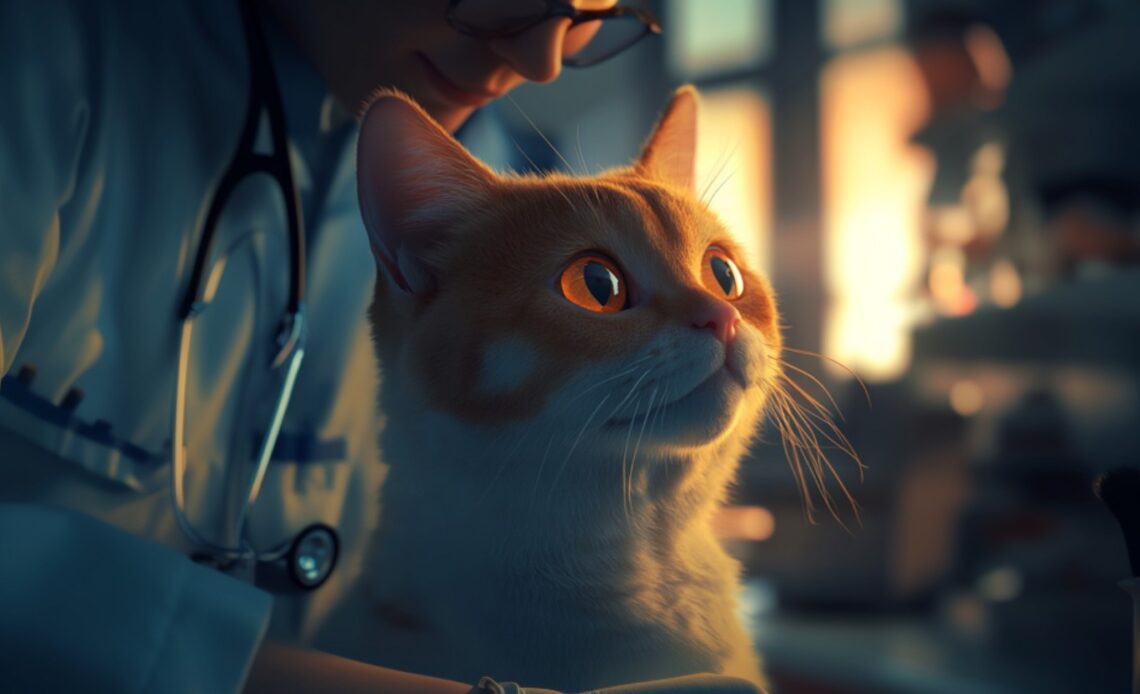
The liver plays a vital role in a cat’s health, involved in metabolism, detoxification, and digestion. When liver disease strikes, it can be insidious and challenging to detect early. This article delves into the nuances of feline liver disease, exploring its signs, available treatments, and prognosis to aid in early detection and informed decision-making.
Signs of Liver Disease in Cats
Liver disease in cats often manifests subtly, with symptoms that may be mistaken for other conditions. Understanding these early signs can be crucial in catching the disease before it progresses.
1. Jaundice (Yellowing of Skin and Eyes)
A telltale sign of liver disease is jaundice, where the skin, eyes, and gums may develop a yellowish tint due to high bilirubin levels. Bilirubin, a byproduct of red blood cell breakdown, accumulates when the liver is unable to process it effectively.
2. Loss of Appetite and Weight Loss
Cats with liver disease often exhibit reduced appetite, leading to noticeable weight loss. This can result from nausea, lethargy, or liver-related metabolic imbalances, all of which diminish a cat’s desire to eat.
3. Vomiting and Diarrhea
Gastrointestinal distress is common as the liver fails to detoxify the blood effectively. Vomiting and diarrhea not only signify liver issues but also exacerbate nutrient loss, weakening the cat further.
4. Lethargy and Weakness
Cats with liver disease may become unusually lethargic, avoiding physical activity and appearing generally disinterested in their surroundings. This fatigue stems from the liver’s impaired ability to convert nutrients into usable energy.
5. Increased Thirst and Urination
Increased thirst (polydipsia) and urination (polyuria) can signal a compromised liver or indicate other conditions such as kidney disease. Both symptoms should prompt an immediate visit to the veterinarian.
Diagnosis of Liver Disease
To accurately diagnose liver disease, veterinarians may rely on a combination of diagnostic tools.
1. Blood Tests
Bloodwork can reveal elevated liver enzymes, bilirubin levels, and other metabolic indicators of liver distress, serving as a primary screening tool for liver disease.
2. Ultrasound and Imaging
Ultrasound is often employed to visualize the liver’s size, shape, and potential abnormalities. In certain cases, CT or MRI scans may provide more detailed imagery, especially if a tumor or obstruction is suspected.
3. Biopsy
A liver biopsy is sometimes necessary to determine the disease’s exact nature. Through a fine needle aspiration or surgical biopsy, veterinarians can examine the liver tissue for inflammation, cancerous cells, or infections, confirming the diagnosis.
Treatment Options for Liver Disease in Cats
Once diagnosed, the treatment of liver disease in cats depends on the underlying cause. Common treatments include dietary adjustments, medications, and, in some cases, surgery.
1. Dietary Modifications
Diet is critical in managing liver disease, as nutrient-dense food eases the liver’s workload. Veterinarians may prescribe a high-quality, low-protein, and low-sodium diet. Vitamins E and K, along with antioxidants, are also beneficial as they support liver function and reduce oxidative stress.
2. Medications
Liver-supportive medications can protect the liver and enhance its functionality. Common medications include:
- Antioxidants to reduce liver inflammation
- Antibiotics for bacterial infections contributing to liver issues
- Ursodeoxycholic acid to improve bile flow
- Lactulose to reduce ammonia levels in hepatic encephalopathy cases
These medications help to slow down disease progression and reduce symptoms, providing relief for the cat.
3. Fluid Therapy
Cats suffering from dehydration due to vomiting or diarrhea may require fluid therapy. Intravenous fluids restore electrolyte balance and hydrate the cat, helping flush toxins from the body.
4. Surgery
In cases of tumors, obstructions, or abscesses, surgical intervention may be necessary. While surgery carries risks, it can be a lifesaving measure when the disease is localized and potentially curable.
Prognosis of Liver Disease in Cats
The prognosis for liver disease in cats varies widely and depends on the stage and nature of the illness. Chronic liver disease often necessitates ongoing management rather than a cure, whereas acute conditions, if treated promptly, can have favorable outcomes.
1. Acute vs. Chronic Liver Disease
- Acute liver disease, triggered by toxin exposure or infection, can improve significantly with swift intervention.
- Chronic liver disease usually has a more guarded prognosis, as ongoing damage may eventually lead to liver failure despite treatment.
2. Quality of Life
With the right treatment, many cats with liver disease can maintain a good quality of life. Dietary management, medication, and regular veterinary check-ups play crucial roles in ensuring that the cat remains comfortable and active for as long as possible.
3. Life Expectancy
The life expectancy of a cat with liver disease varies. Cats with early detection and proper treatment can live for several years, whereas advanced cases may have a shorter lifespan due to progressive liver failure.
Conclusion
Liver disease in cats is a complex and often silent ailment, challenging to detect yet impactful if left untreated. Early recognition of symptoms, timely medical intervention, and a well-tailored treatment plan can help manage the condition effectively, ensuring your feline companion remains comfortable and healthy. Regular veterinary check-ups and an observant eye on your cat’s behavior can make a world of difference, potentially adding years of companionship with your cherished pet.

